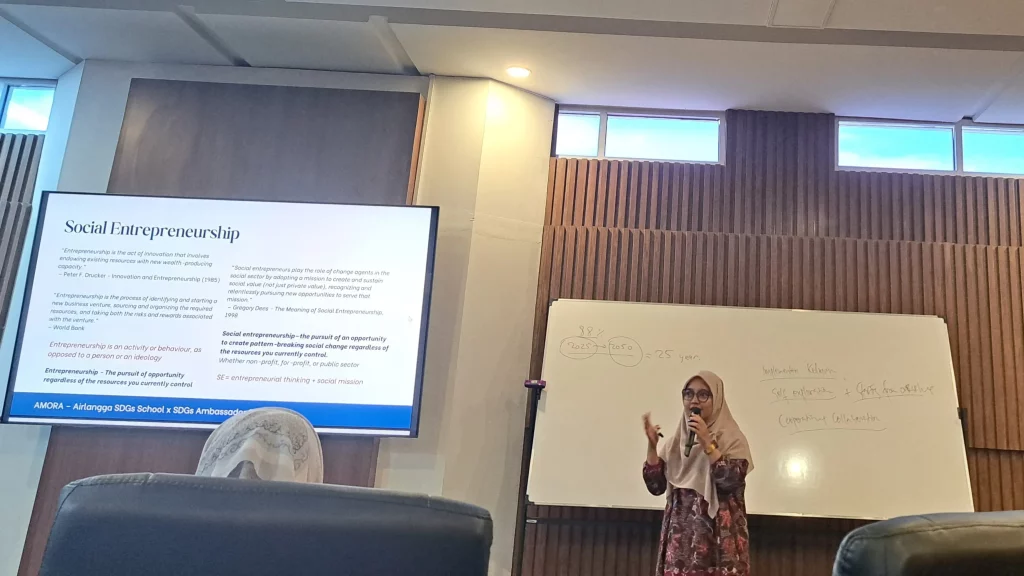UNAIR NEWS – The SDGs Center at Universitas Airlangga (UNAIR), in partnership with the SDGs Ambassadors, held the SDGs School event at the Bayu Kinara Room in the Airlangga Convention Center. On the second day, Thursday (May 15, 2025), participants attended a session on social entrepreneurship led by Al Marifatul A’la, SEI, MA.
A’la stressed that achieving success in social entrepreneurship depends heavily on careful planning. However, beyond a strong plan, a team’s deep understanding of each member’s background and skillset is essential.
“The synergy within a team is a crucial factor in developing strategies that are both practical and sustainable,” A’la said. “An effective team complements one another, understands individual strengths and weaknesses, and leverages each person’s capabilities to achieve a shared business vision.”
Applying design thinking in social intrepreneurship
A’la introduced four key principles to guide impactful innovation. The first, she said, is empathy. She explained that effective innovation must begin with a deep understanding of users and their daily lives. “To create meaningful solutions, you must truly understand your users—their experiences, needs, and challenges. This empathy can be developed through observation, interaction, and active listening,” she explained.
The second principle is define, which involves framing the problem accurately. A’la emphasized that correctly identifying the problem is essential to crafting effective solutions. A clear and well-defined problem helps the team stay focused, inspires innovation, guides decision-making, and provides a basis for evaluating potential ideas.
After defining the problem, the third principle is ideate. At this stage, the goal is not to find the “perfect” idea but to generate as many ideas as possible. This broad approach fosters creativity and opens the door to a wide range of possible solutions.
Lastly, A’la highlighted the importance of prototyping and testing. “Start by developing a prototype with a strong focus on user needs. Once created, the prototype should be tested directly with users,” he said. This process helps teams observe how users interact with the solution, refine the design, and ultimately improve the user experience.
Author: Arifatun Nazilah
Editor: Khefti Al Mawalia









